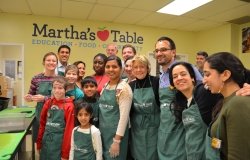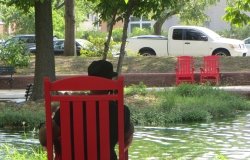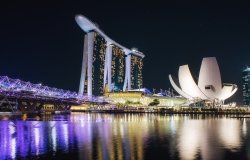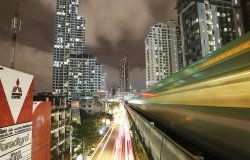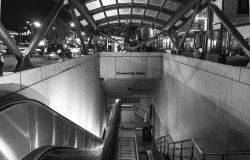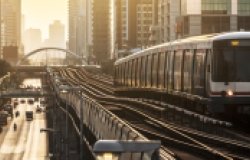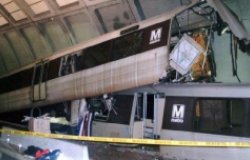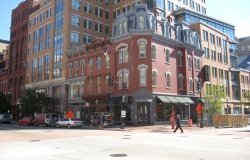After Baltimore, we must see community as a process
"As time passes, Baltimore will find ways to move forward. Too many Baltimoreans are too committed to their city for the current status quo to remain invariable. To do so, though, community and neighborhoods have to engage a larger world rather than build existing walls ever higher,” writes Blair Ruble.
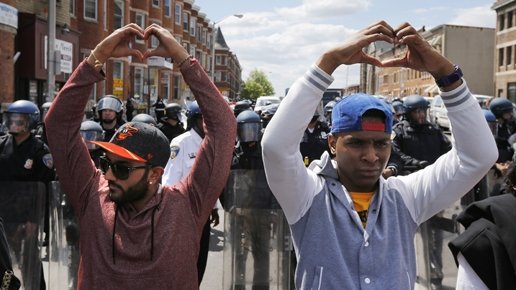
Baltimore became my refuge when I moved to the District four decades ago. As a native New Yorker, I could not quite adjust to overly conformist official and bureaucratic life in a nation’s capital. Charm City’s quirky citizens just an hour away offered a much appreciated escape. Working-class Baltimore was the opposite of Washington, blues singer Leadbelly’s quintessential “Bourgeois town.” Watching Baltimore’s torment unfold in recent days has broken my heart.
Over time, I came to understand that Baltimore and the District have much in common. Both cities were carved out of large slaveholding states at the beginning of the republic. Baltimore and the District were two of the three cities on the eve of the Civil War in which there were more free blacks than slaves (St. Louis was the third). These venerable African American communities faced down vicious segregation by creating their own vibrant institutions – civic, educational, commercial and religious. Both cities produced people who changed the country and the world. To mention but a single example, the first African American to serve on the Supreme Court, Thurgood Marshall, grew up in Baltimore and secured top legal training at Washington’s Howard University.
Both cities followed similar trajectories of urban “decline” and population flight following World War II.
Baltimore and Washington experienced destructive riots in 1968 following the assassination of the Rev. Martin Luther King Jr. The scars from those riots are becoming less visible in the District but remain starkly evident in Baltimore. Recent development in the areas that saw rioting in 1968 in the District underscores two significant differences between the cities that offer important insights into how we think about cities.
The large African American working classes of Baltimore and the District and Baltimore’s notable white working class benefited from core economic sectors that provided long-term, decently paid employment with opportunity for upward mobility. In the case of Baltimore, the steel and shipbuilding and related industries that supported so much of the city’s life have collapsed. In the District, the federal government has played an important role in supporting the city’s recent economic vitality. Employment and, more important, career opportunities matter for people and for communities.
The concept of neighborhood has evolved differently in both cities as well. Following the related but distinct traumas of white flight and suburbanization in the 1950s, the District’s neighborhoods entered a half century of turmoil and upheaval. Many established in-town communities collapsed as blacks and whites and rich and poor changed places. Working-class white neighborhoods in Anacostia became black; prestigious uptown neighborhoods transformed from white hands to become a black “Gold Coast.” In more recent years, the once pre-eminent African American community around U Street became majority white.
In Baltimore, the same social and economic forces encouraged the glorification of “neighborhood.” Baltimoreans love their city — as has been evident despite all the traumas of recent days — and their adoration begins at home. Communities became surrounded by invisible moats with clear and defined boundaries.
The advantage of strong neighborhood identity is a deep social capital enhancing community resilience. The disadvantage are walls that declare those not within a community’s embrace to be outsiders.
The uneasy relations among Washington old-timers and newcomers are real. We should understand that tensions are rising in the District and — given the wrong people at the wrong place at the wrong time — neighborhoods here can explode as they have in Baltimore. Nonetheless, the constant disruptions of Washington communities have forced an at times unwelcome yet fruitful interaction among residents. Most important, open neighborhoods can create pathways into the world at large. The District’s many current trials include connecting still-disenfranchised neighborhoods – particularly those “east of the river” — to the opportunities that exist elsewhere in the city and region.
As time passes, Baltimore will find ways to move forward. Too many Baltimoreans are too committed to their city for the status quo to remain invariable. To do so, though, community and neighborhoods have to engage a larger world rather than build existing walls ever higher. Community has to be a process, not an object; a verb, not a noun.
The opinions expressed here are solely those of the author.
This article was originally published in The Washington Post.
About the Author

Blair A. Ruble
Former Wilson Center Vice President for Programs (2014-2017); Director of the Comparative Urban Studies Program/Urban Sustainability Laboratory (1992-2017); Director of the Kennan Institute for Advanced Russian Studies (1989-2012) and Director of the Program on Global Sustainability and Resilience (2012-2014)

Urban Sustainability Laboratory
Since 1991, the Urban Sustainability Laboratory has advanced solutions to urban challenges—such as poverty, exclusion, insecurity, and environmental degradation—by promoting evidence-based research to support sustainable, equitable and peaceful cities. Read more

Urban Sustainability Laboratory
Since 1991, the Urban Sustainability Laboratory has advanced solutions to urban challenges—such as poverty, exclusion, insecurity, and environmental degradation—by promoting evidence-based research to support sustainable, equitable and peaceful cities. Read more


